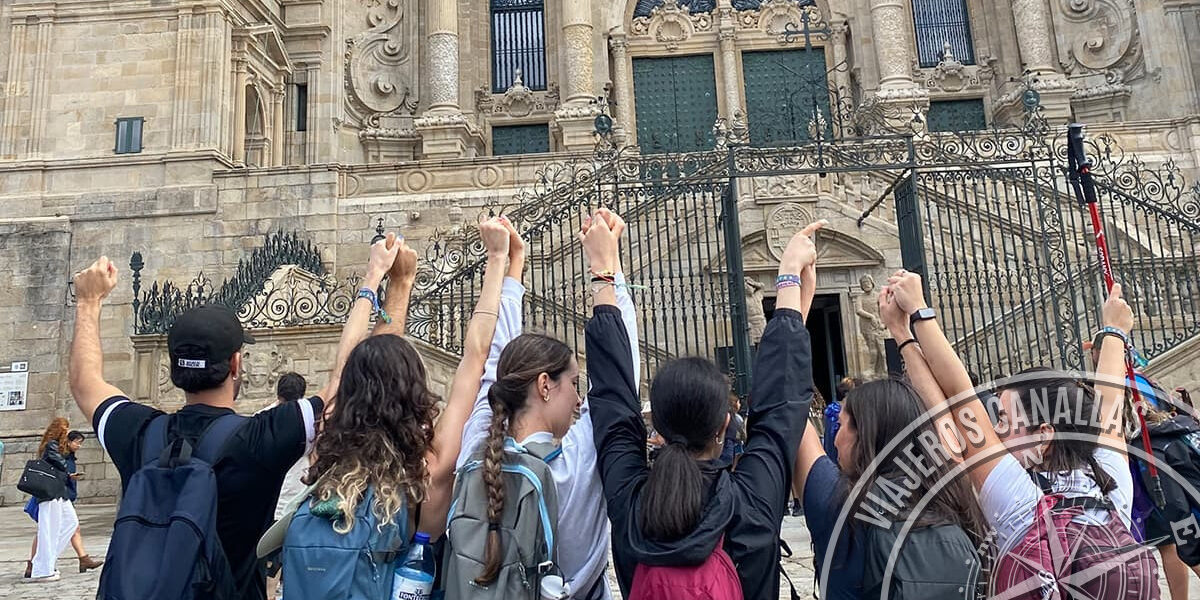Portuguese Way or French Way: Which is the best for you?
Imagine you are facing two routes: the Portuguese Way from Baiona in Galicia and the French Way from Sarria in Lugo. Both lead to Santiago, but each offers very different experiences. Which one suits you better? Read on.
Why this choice is important
The choice of route affects your experience, the people you will meet, the landscapes and the length of your pilgrimage. Knowing these details will help you decide for sure.
Portuguese Way from Baiona: tranquillity and Atlantic landscapes
Advantages
Accessible and panoramic section: From Baiona to Santiago there are 124 km.
Less crowded: Compared to Sarria-Santiago, you will find fewer pilgrims and a more intimate experience.
Coastal and green landscapes: beaches, cliffs and small villages that show the authentic Galicia.
Local culture: Galician gastronomy with Portuguese influence, fresh seafood and Albariño wines.
Disadvantages
Fewer large hostels: Some rural sections have more limited accommodation.
Irregular signposting: Although well marked, it is less obvious than the French Way.
The French Way from Sarria: tradition and comfort
Advantages
Ideal distance for the Compostela: From Sarria to Santiago is about 114 km, the minimum distance required to obtain the Compostela.
Complete infrastructure: Hostels, bars and restaurants along the entire stretch.
Pilgrim atmosphere: Very busy Camino, opportunity to meet people from all over the world.
Varied landscapes: Galician forests, rivers and villages that reflect the Jacobean tradition.
Disadvantages
More crowds: Especially in summer and at Easter, the route can feel crowded.
Less quiet: If you're looking for introspection, it may not be ideal.
Which one to choose according to your style of pilgrimage?
Quiet and contemplative: Portuguese Way from Baiona, Atlantic landscapes and less affluence.
Traditional and sociable: French Way from Sarria, good infrastructure and constant pilgrim atmosphere.
Live the Camino with Viajeros Canallas
At Viajeros Canallas we are the best rated and number one company in the organisation of the Camino de Santiago in group. We offer you:
Personalised itineraries.
Constant support throughout the journey.
Transport of backpacks
Selected hostels
Community of pilgrims who will accompany you every step of the way.
Frequently Asked Questions (FAQs)
What is the best time to do the Camino de Santiago?
Portuguese Way from Baiona: spring (April-June) is ideal, because the coastal landscapes are green and the weather is mild, avoiding the excessive wind and rain that can occur in autumn.
French Route from Sarria: autumn (September-October) is usually the best option, as temperatures are pleasant, the Galician forests are at their peak and there are fewer pilgrims than in summer.
How long does it take to travel from Baiona and Sarria with Viajeros Canallas?
Portuguese Way from Baiona: eight days, seven nights and six stages.
French Way from Sarria: seven days, six nights and five stages.
Is it necessary to have previous experience to do these sections of the Camino?
No, both sections are suitable for beginners. Reasonable daily distances are covered and Viajeros Canallas provides constant support and backpack transport if necessary. But if it is your first time, we recommend the Camino Francés. It is the one that most people do and even repeats, there are beautiful landscapes, villages, small towns, great food and the fact that it is full of services (towns, villages and bars in intermediate areas) will give you a lot of security and people leave delighted.
What does the organisation of Viajeros Canallas include in these trips?
Viajeros Canallas organizes the Camino experience in group, including accommodation in selected hostels, half board (dinners and breakfasts), Canalla Guide, planning of the stages, general coordination of the trip and surprises. The transfer of backpacks is optional and can be contracted separately.
Can I do the Camino at my own pace if I go with Viajeros Canallas?
Yes, although you follow the planned stages, there is flexibility to adjust the pace and enjoy stops in villages, panoramic views or additional breaks as you need. The Camino is experiential and personal, you can do it at your own pace, you do not walk with the group (it is not compulsory).
